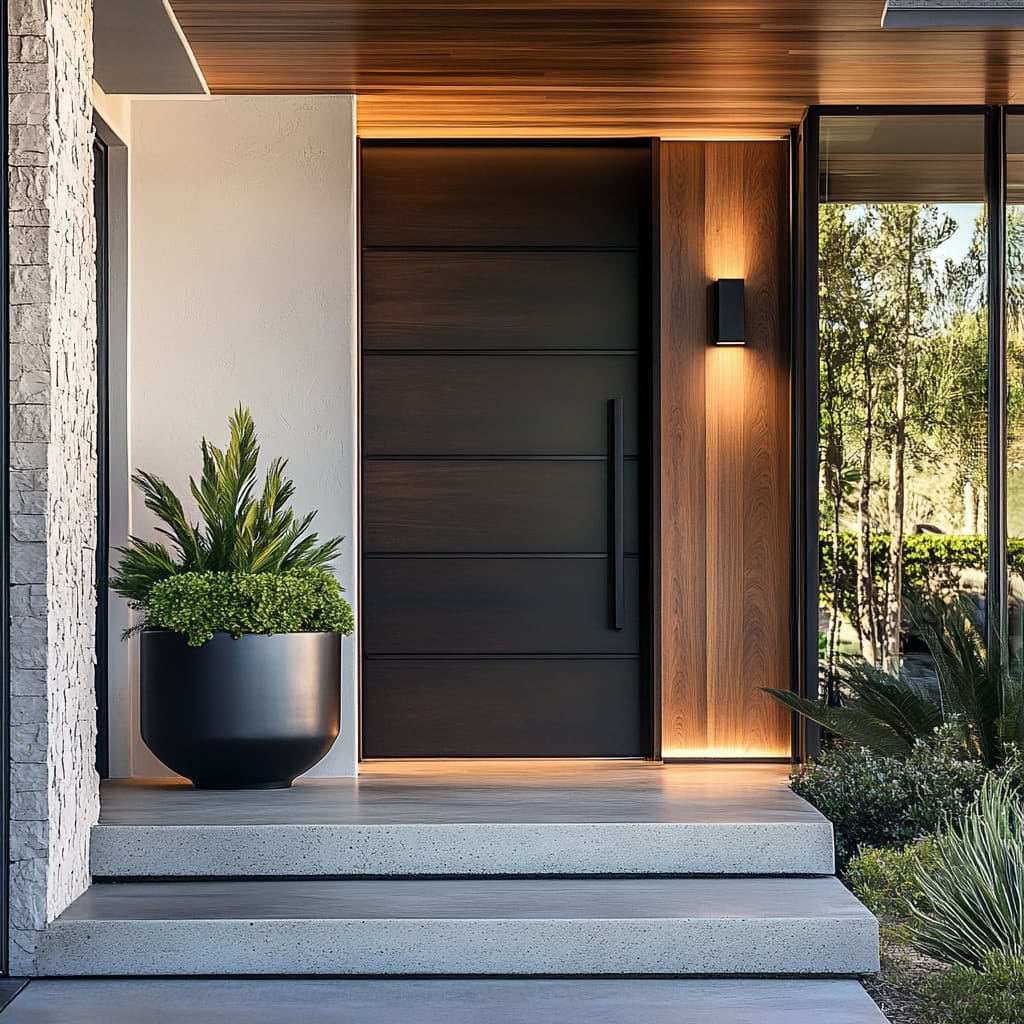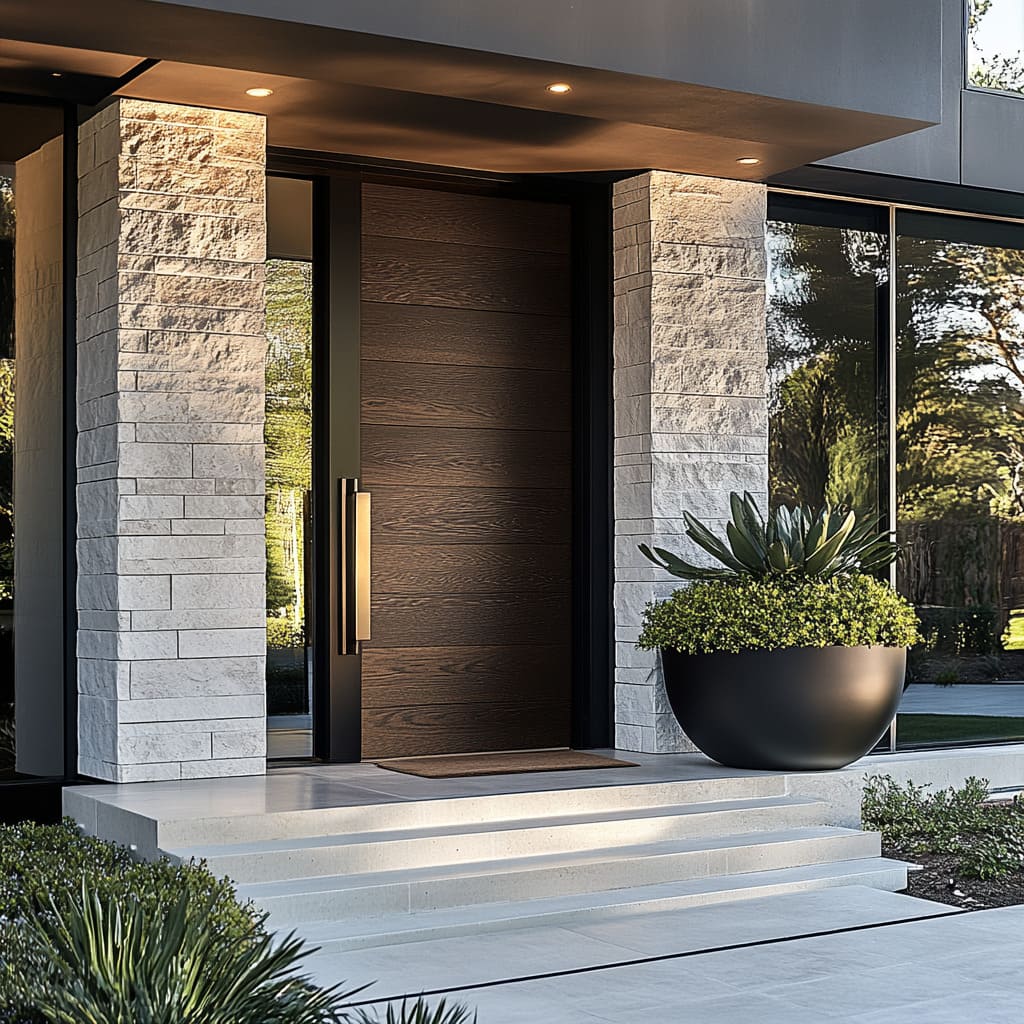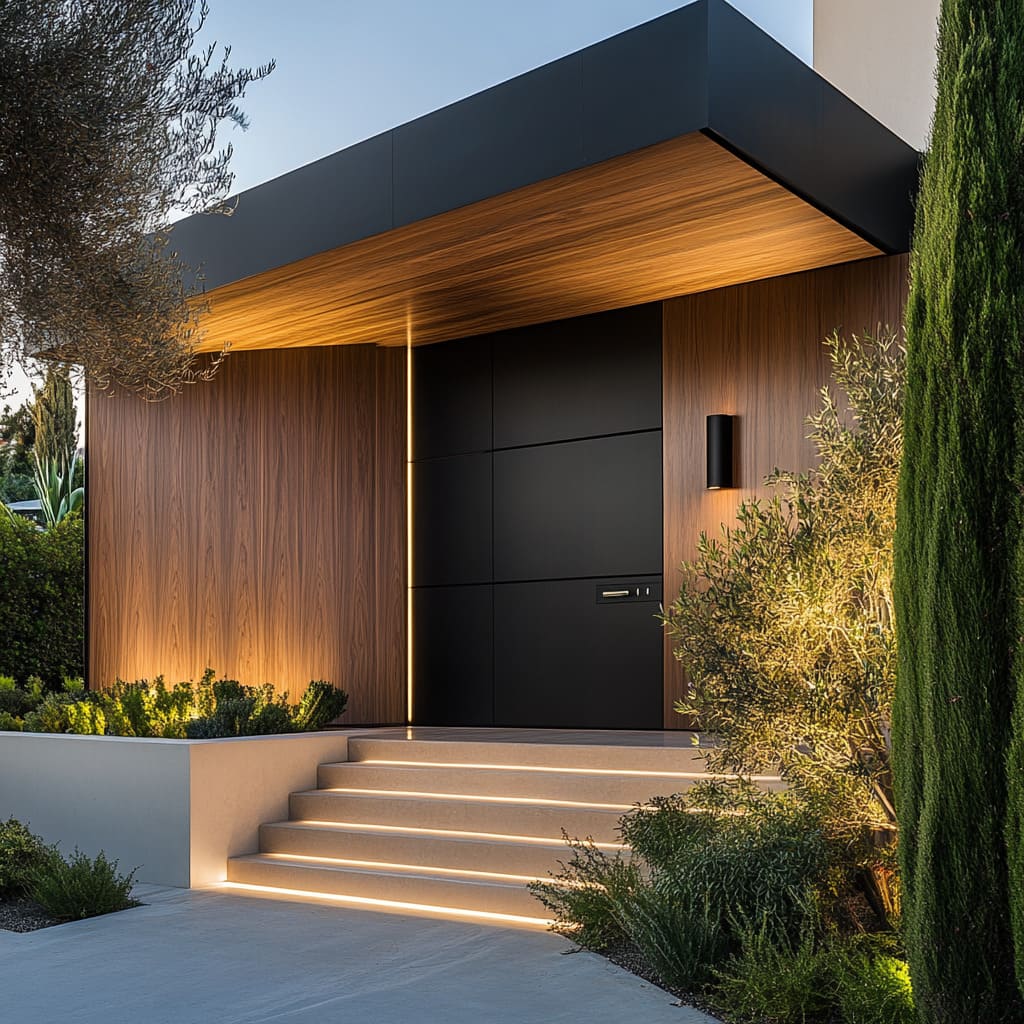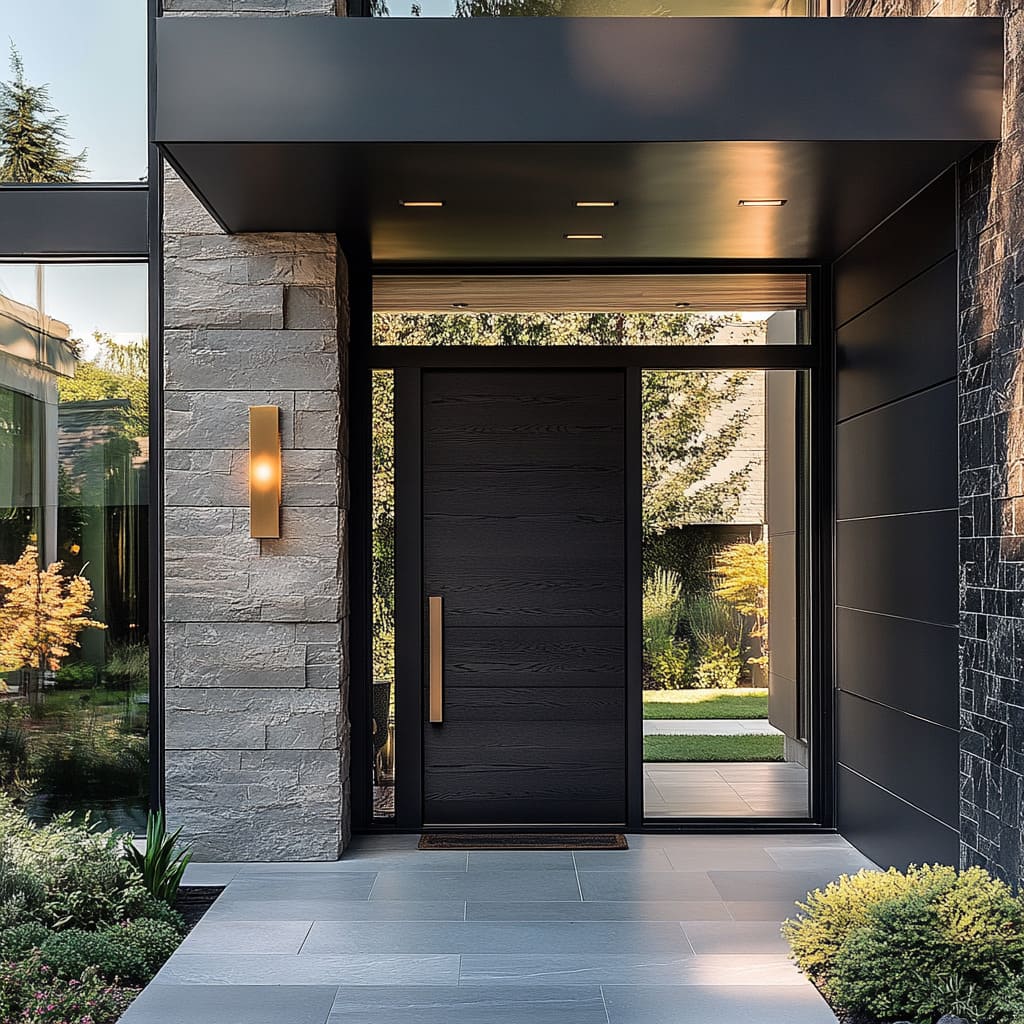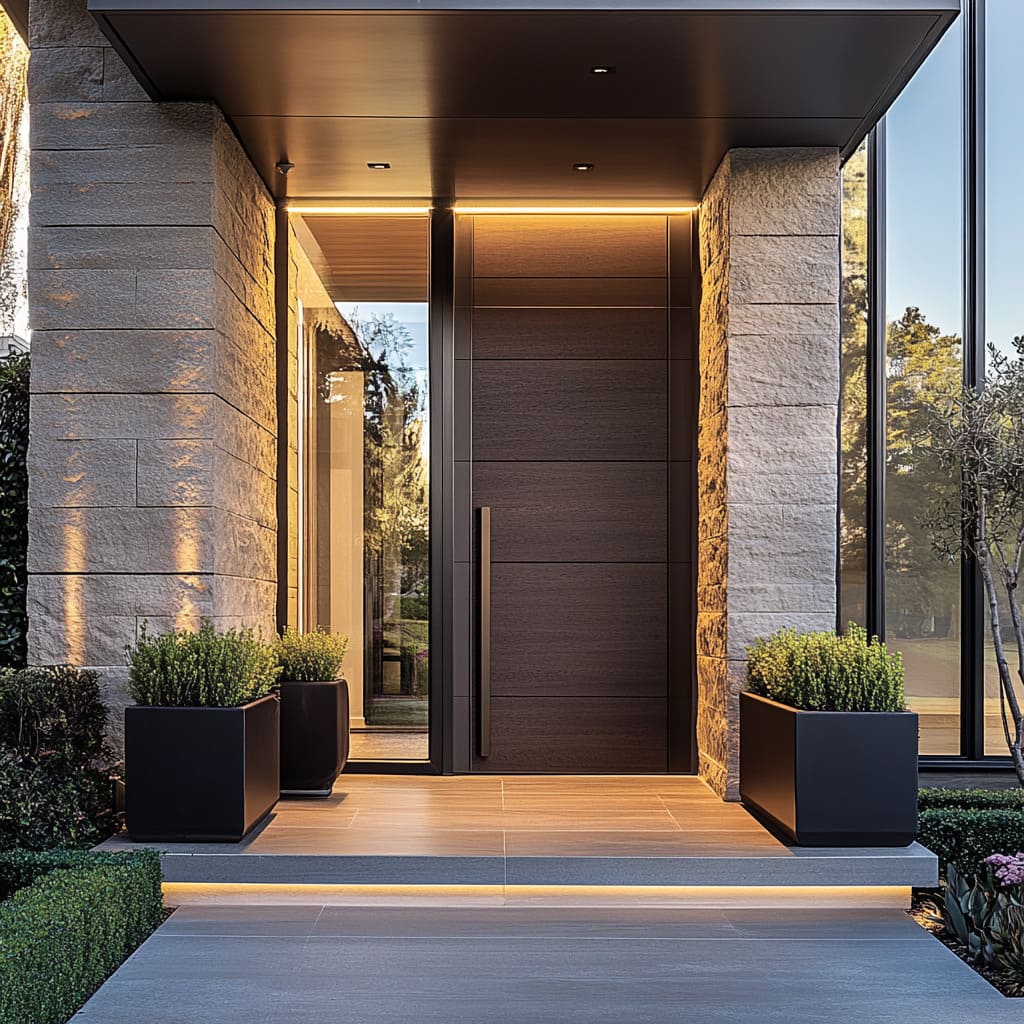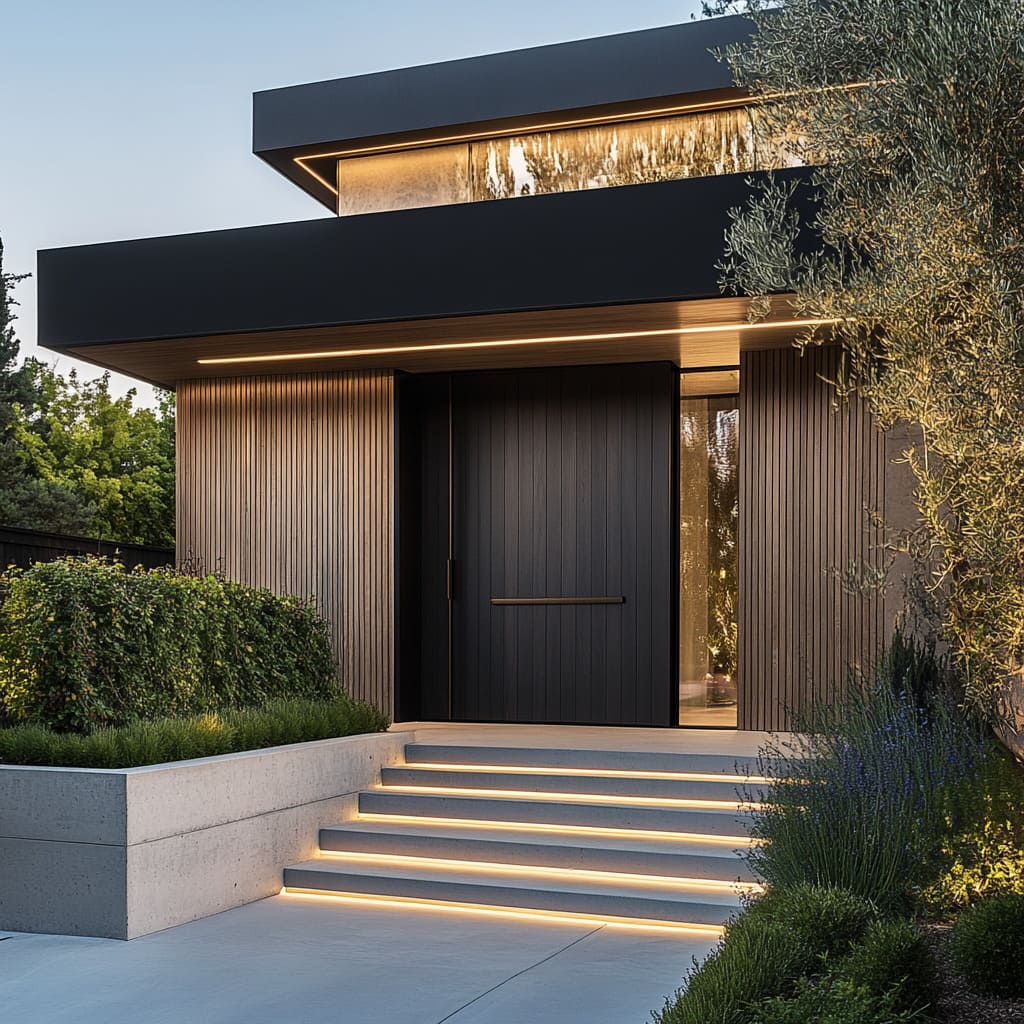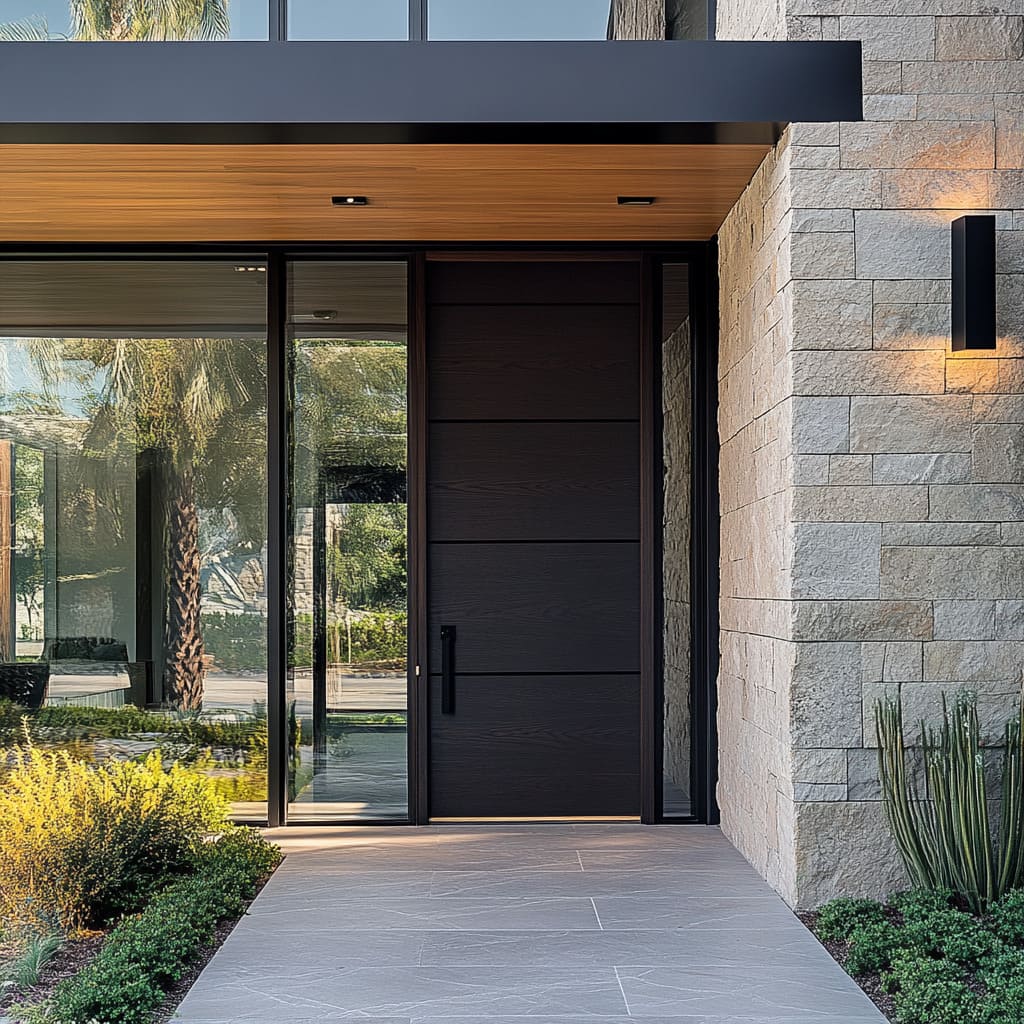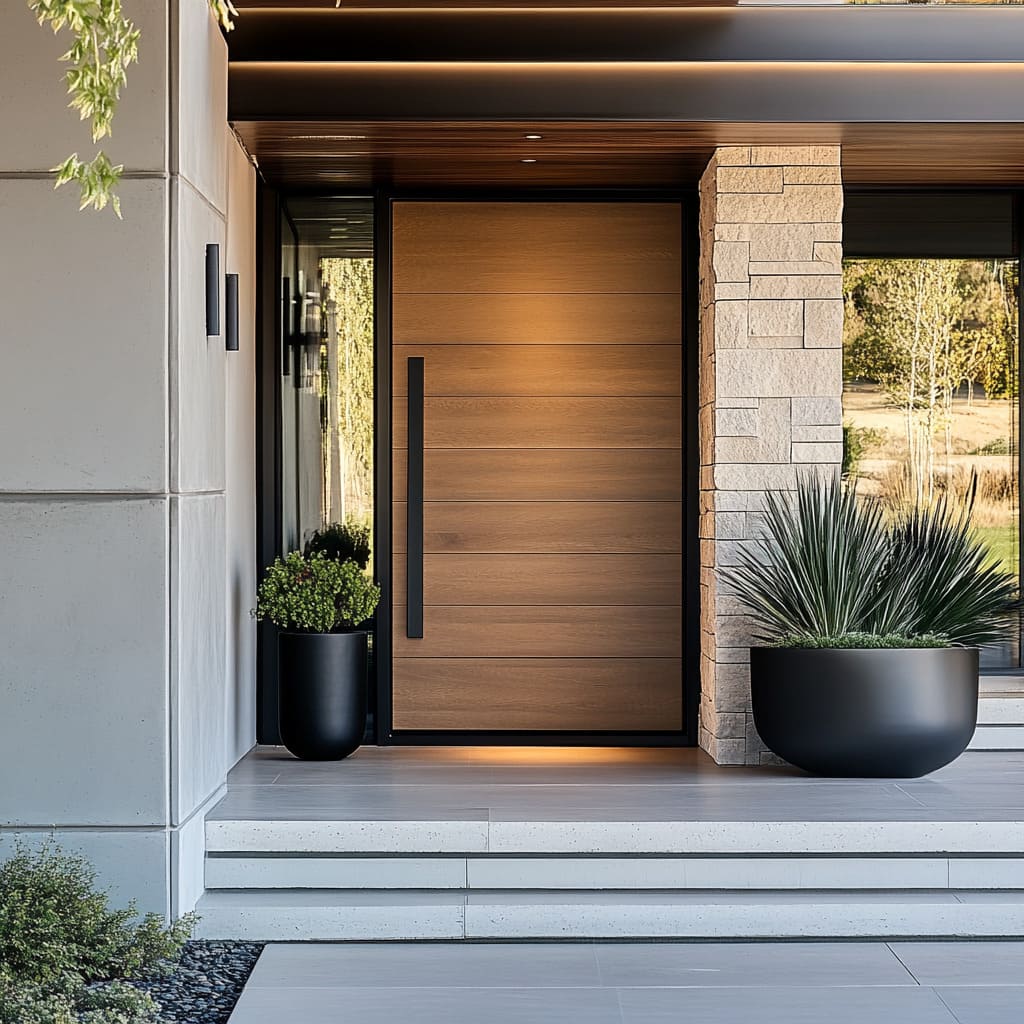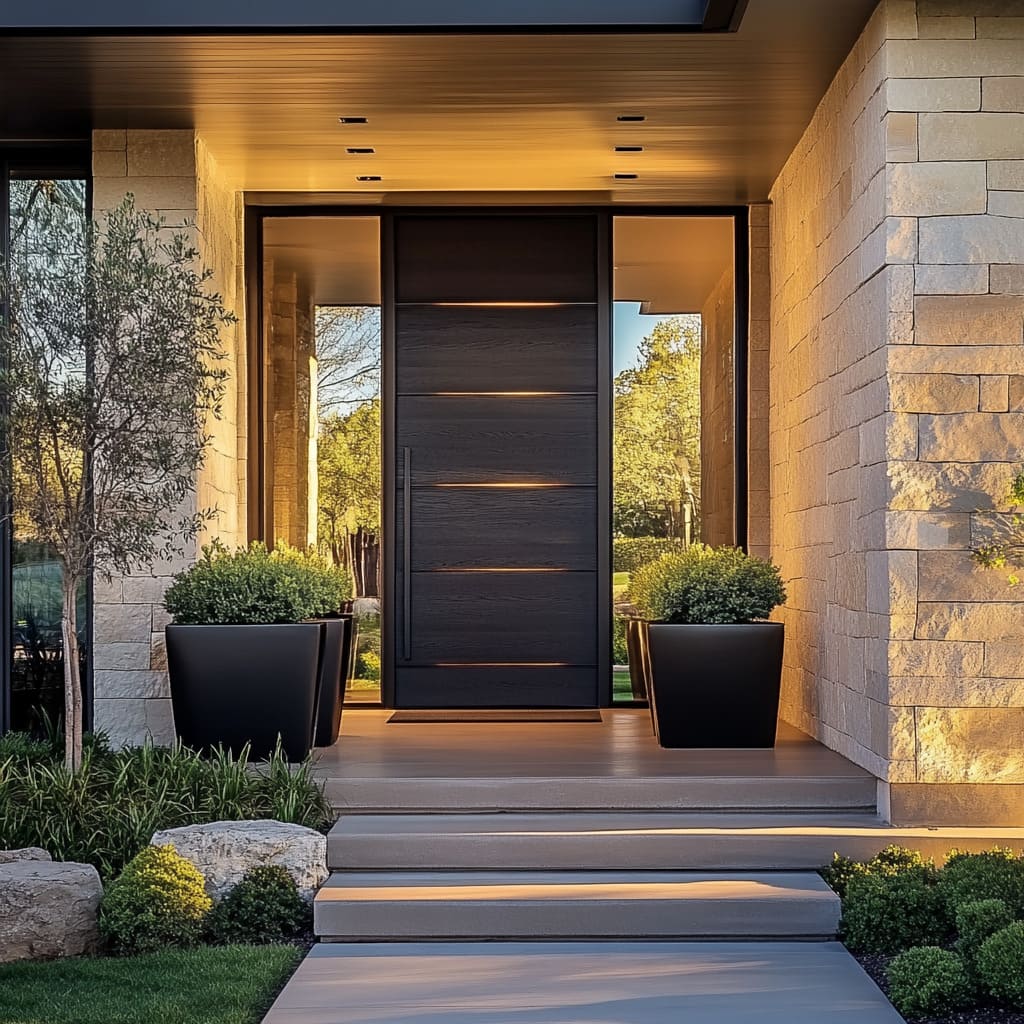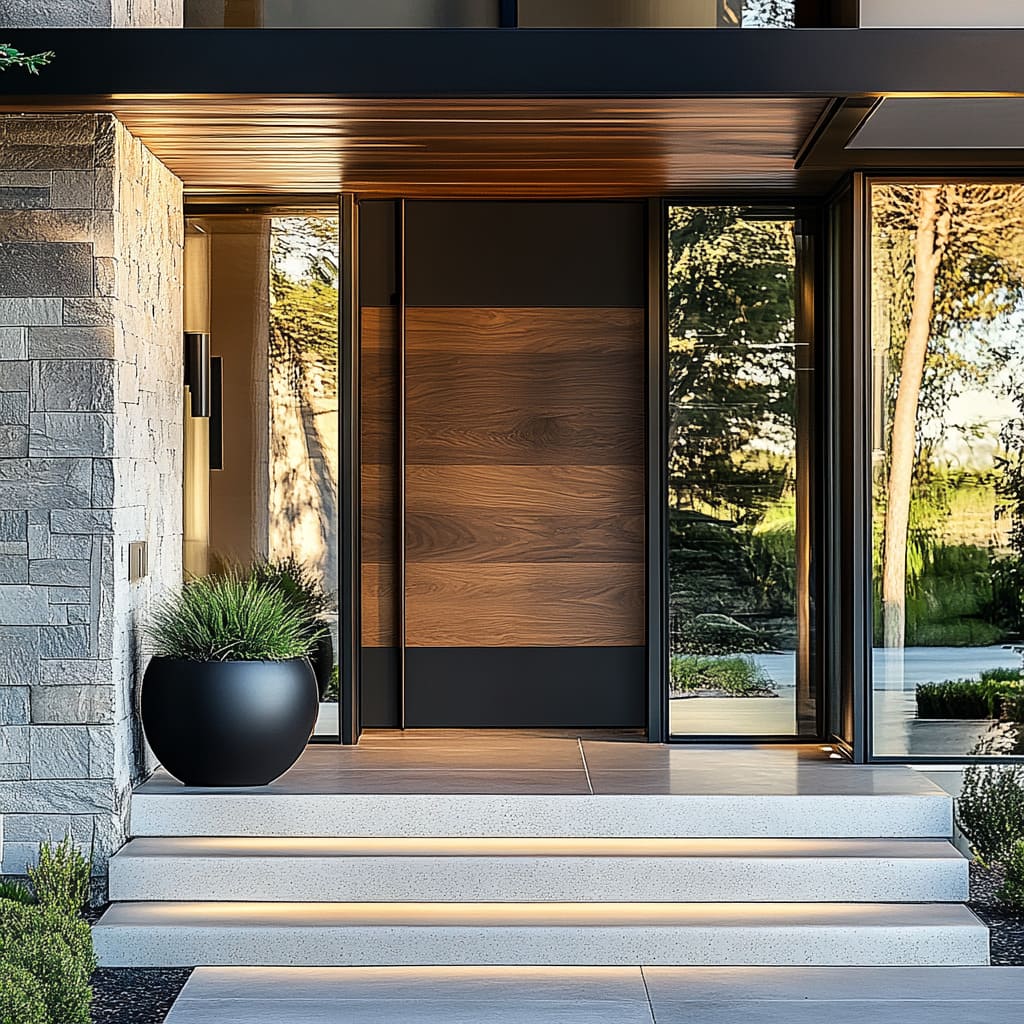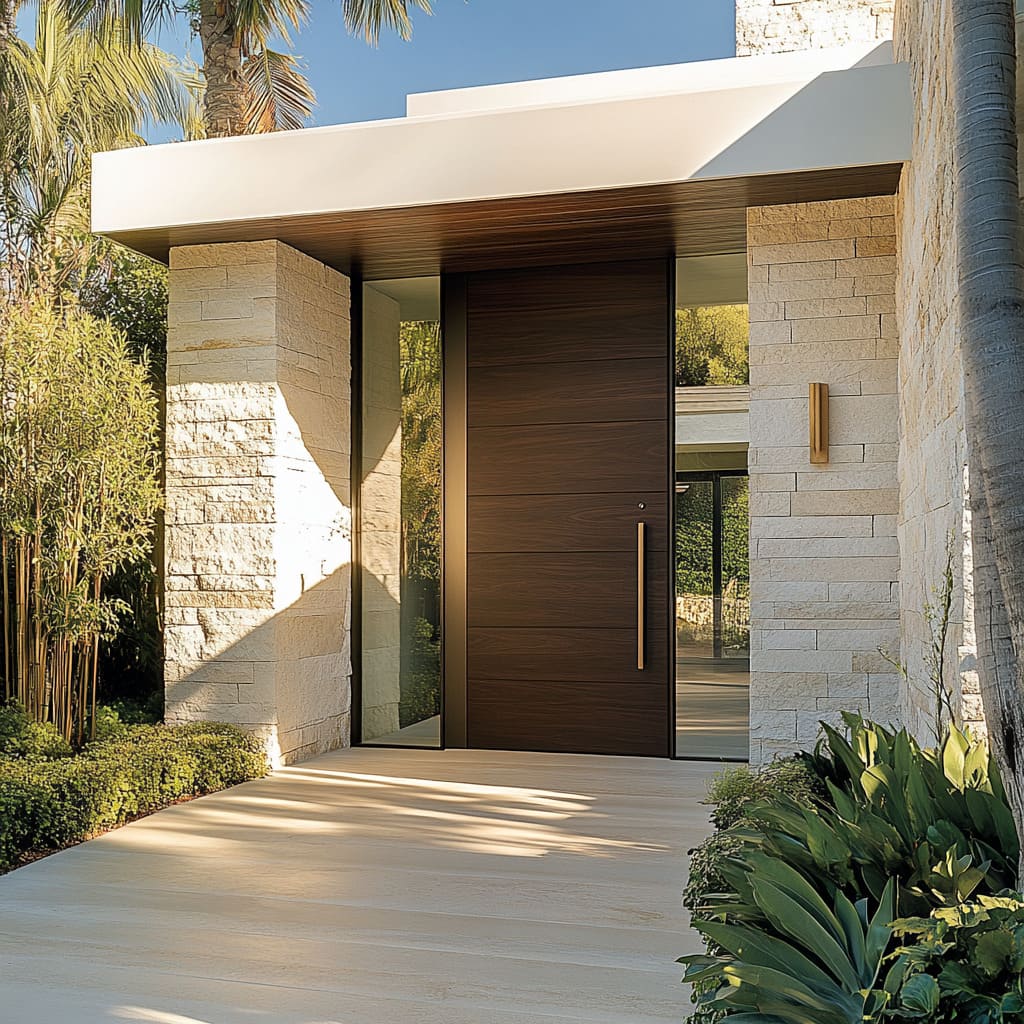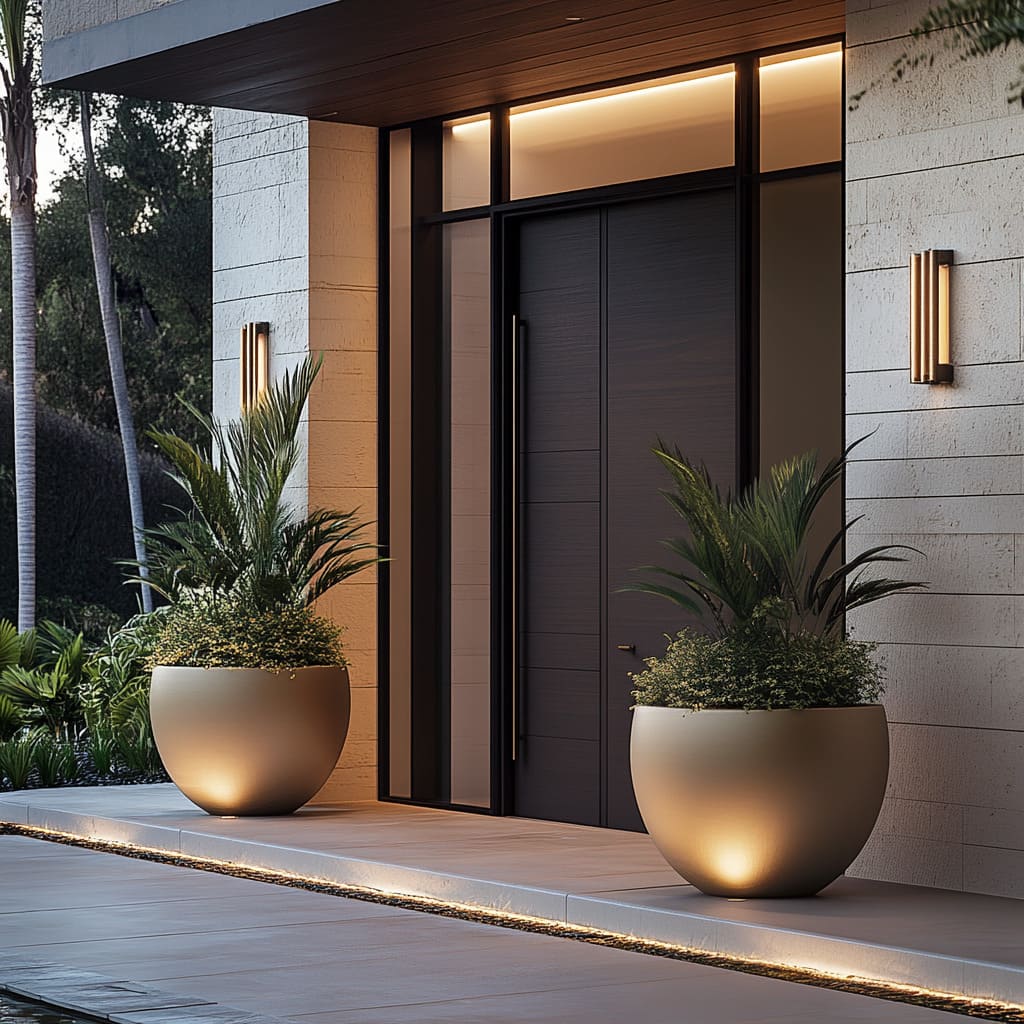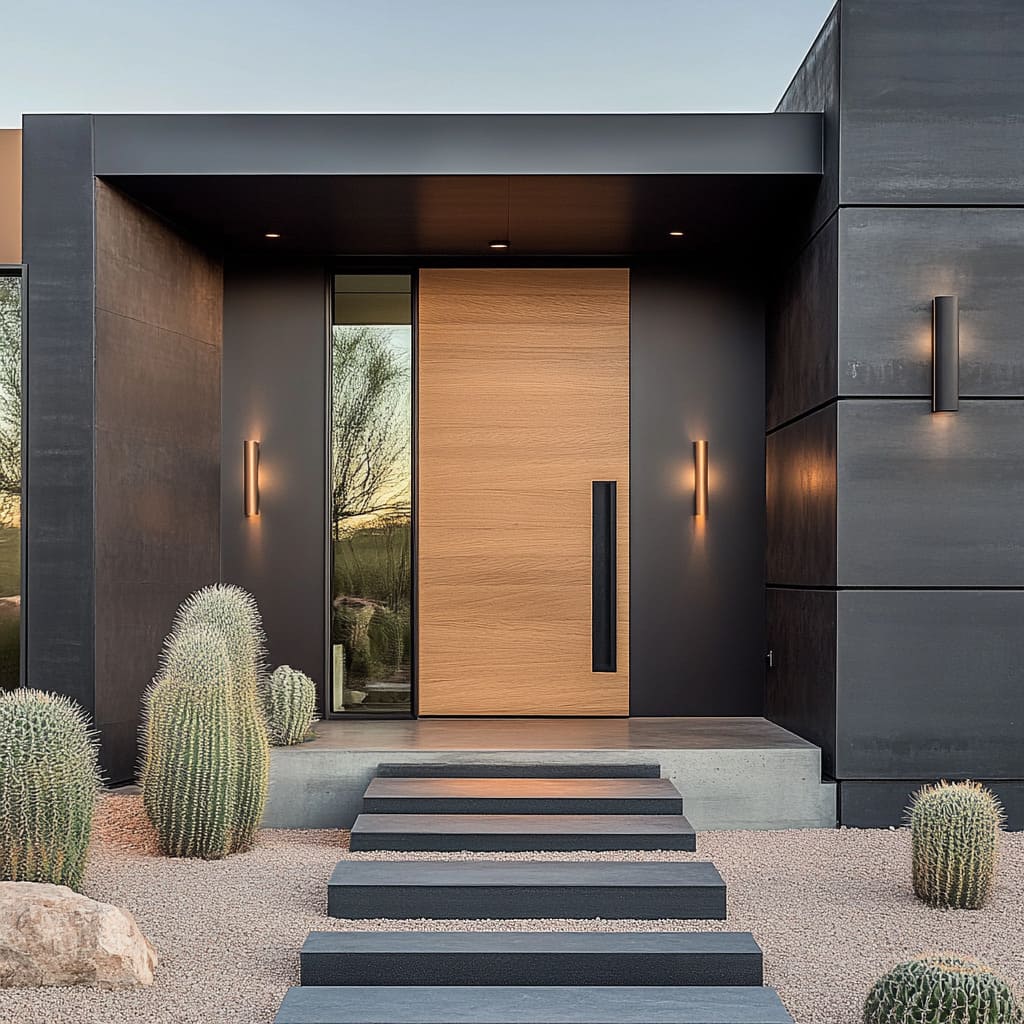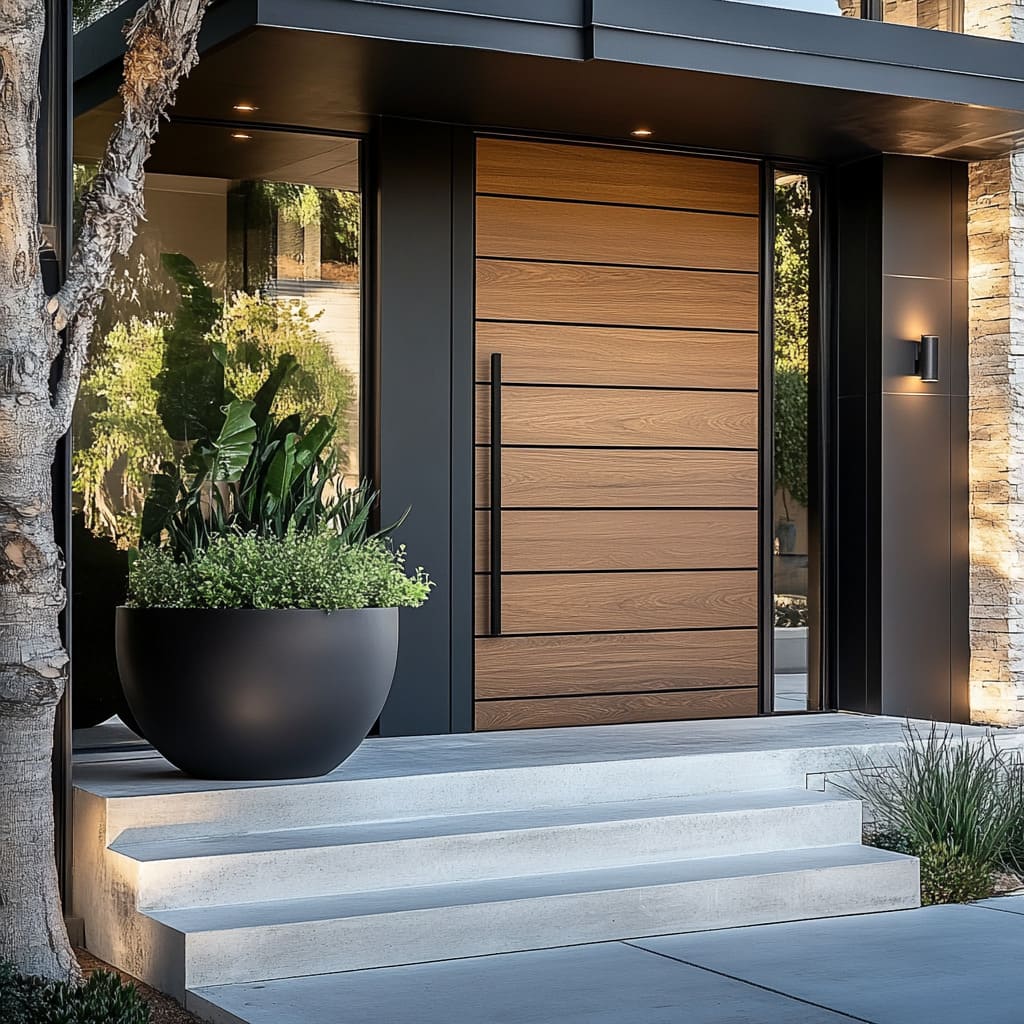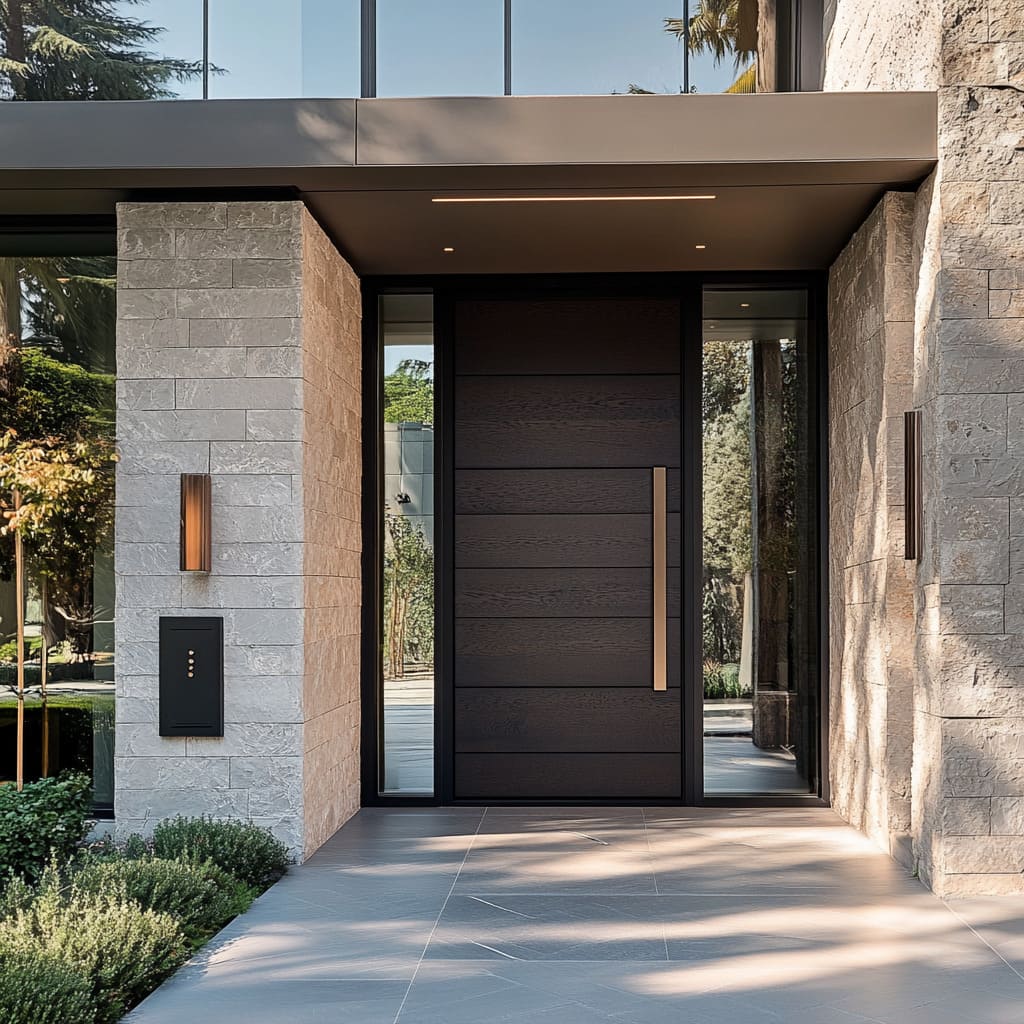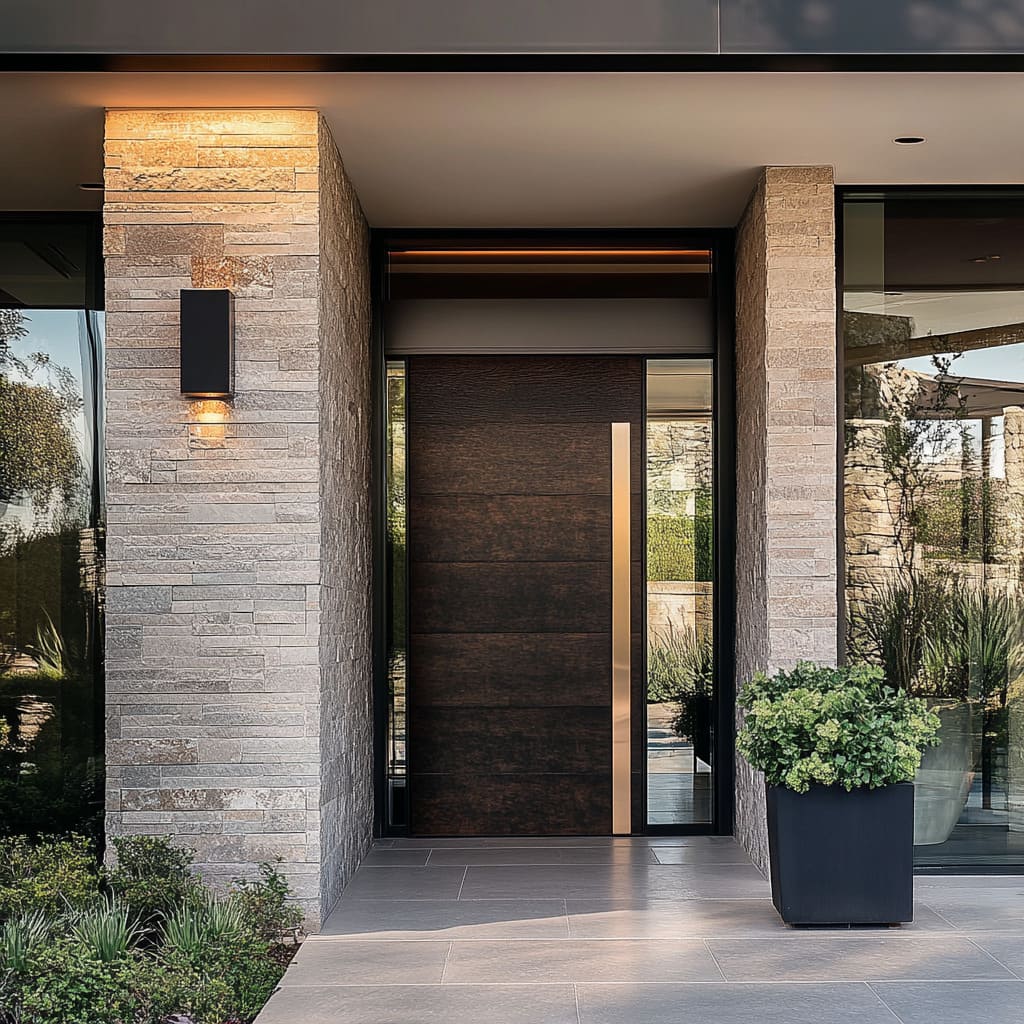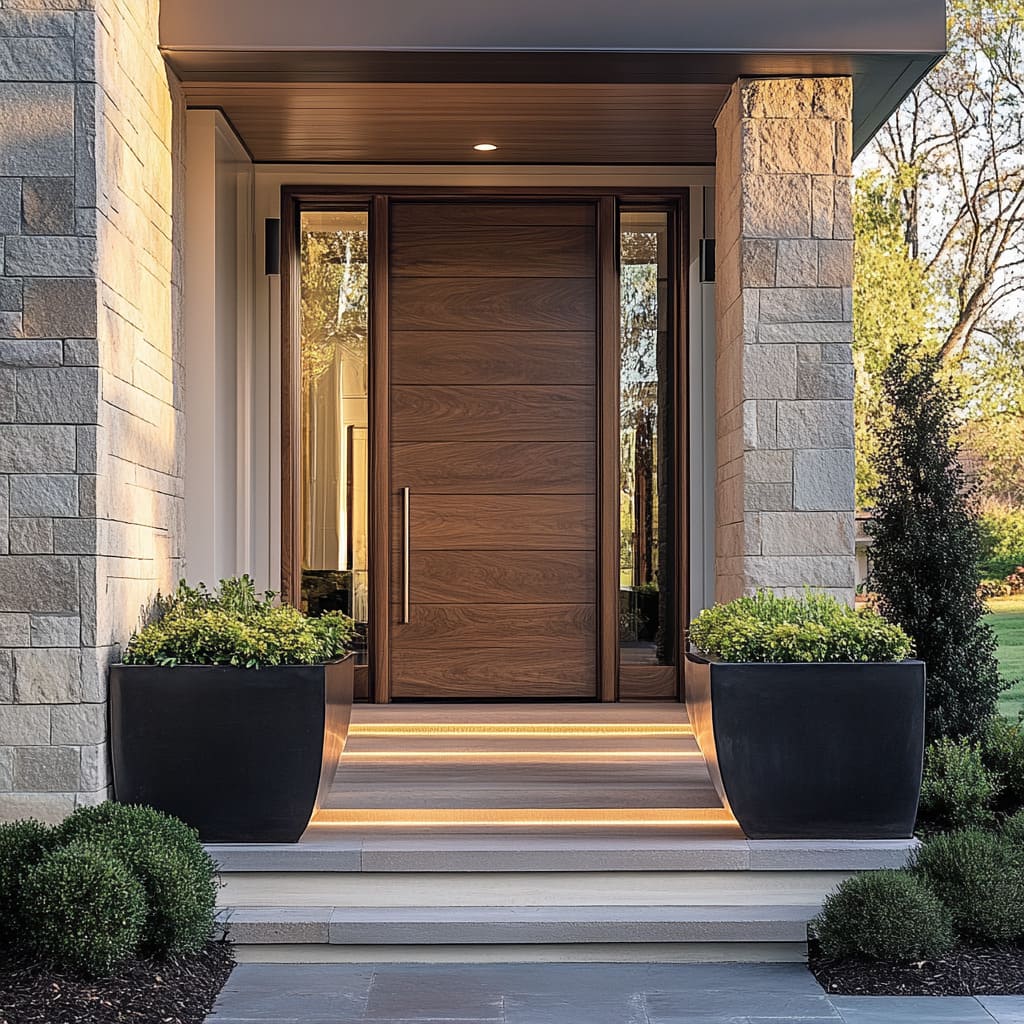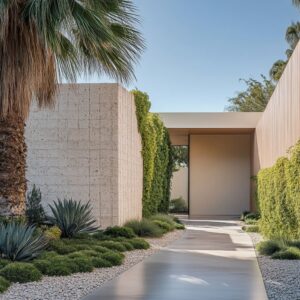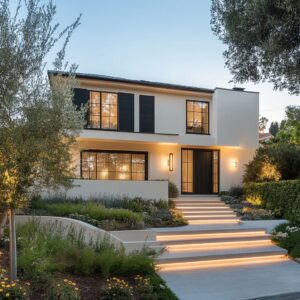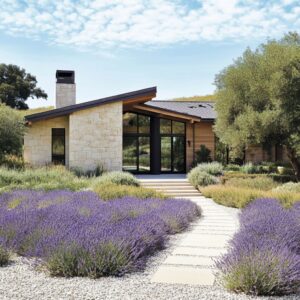Modern home front porches and entrance door designs have evolved into a refined blend of functionality and visual appeal, serving as the gateway to a home’s personality. They’re no longer just transitional spaces but carefully planned areas that leave a strong impression.
From the way materials are paired to the clever use of lighting, every element in a modern porch design contributes to its unique charm.
This article takes a closer look at the fine details that make these designs stand out. By breaking down elements like structure, materials, and spatial flow, we’ll explore how these ideas shape the way we experience and interact with these spaces.
You’ll also find practical tips to adapt these concepts for your own home, ensuring your porch becomes a welcoming and stylish entry point. Whether you draw inspiration from urban neighborhoods or minimalist homes in the countryside, the insights here will help you see your entryway with fresh eyes.
Structural Analysis: Proportion, Symmetry, and Framing
The structure of a modern entrance is more than a functional framework; it’s a visual statement that sets the tone for the home. One striking feature of many modern porch ideas is their ability to achieve balance, often through a subtle mix of symmetry and deliberate contrasts.
For example, asymmetrical elements like unevenly sized planters are often counterbalanced by strong symmetrical framing around the door, creating harmony without feeling overly rigid. This approach softens the structure and makes the entrance feel welcoming while maintaining a clean, organized aesthetic.
Framing plays an essential role in elevating the visual focus of the entrance. Whether defined by sleek glass side panels or bold cladding materials, these frames serve to highlight the modern front door design, guiding the eye naturally to the focal point.
This method creates a sense of cohesion, ensuring that every surrounding detail—whether it’s stonework, wood panels, or lighting—feels tied together. The simplicity of strong, clean lines contrasts beautifully with natural materials, offering both sophistication and a timeless look.
Height also matters when it comes to creating a standout entrance. Subtle vertical elements, such as elongated door handles or grooves carved into wooden panels, are carefully incorporated to draw the eye upward.
These details amplify the sense of scale, making even smaller porches feel grand. It’s an architectural trick that brings a sense of importance to the door without overwhelming the overall design.
When planning your entrance, consider the balance between proportions and materials. Contrasting textures, such as smooth wood against rough stone, can add dimension, while framing your door with contrasting or complementary materials ensures it becomes a natural focal point.
By emphasizing vertical lines and symmetry, you can achieve an entrance that feels both stylish and approachable.
Material-Focused Analysis: Texture and Contrast
The materials used in a modern porch design often tell a story of balance, where contrasting elements come together to create a visually dynamic space. By pairing textures like rough stone with smooth wooden doors, designers achieve a depth that keeps the space interesting without overwhelming the eye.
For instance, a light stone facade can highlight the warmth of a dark, natural wood door, while matte black accents tie the composition together with clean, contemporary lines. This intentional contrast ensures that each material stands out yet feels part of a cohesive design.
Natural materials, such as wood, stone, and metal, are key players in many of these designs. They add authenticity and a sense of grounded warmth that complements the modern aesthetic.
Visible wood grain lends a tactile richness to doors, making them feel more inviting, while stone interacts with sunlight to cast subtle shadows that shift throughout the day. This interplay of light and material gives the entrance an ever-changing quality, making it feel alive and engaging.
What sets many of these porches apart is their layered complexity. Designers often incorporate multiple finishes—such as brushed metal door handles, textured stone with varied tones, or frosted glass panels—creating understated yet impactful details.
These layers allow each material to shine on its own while contributing to the overall sophistication of the space. When considering materials for your porch, think about how contrasting textures can complement each other.
Warm, organic materials like wood and stone pair beautifully with cooler, polished finishes like metal or glass. By carefully selecting and layering these materials, you can achieve a modern design that feels balanced, inviting, and effortlessly stylish.
Lighting-Centric Analysis: Functional and Emotional Impact
Lighting can completely transform the way a front porch feels and functions, turning it into a space that is not only practical but also visually striking. One of the most effective techniques is layered lighting, which combines different sources to achieve both utility and drama.
Recessed fixtures installed under overhangs provide soft, ambient light, while wall-mounted sconces add focused illumination that enhances architectural details. For a touch of modern flair, LED strips along stair risers create a subtle glow that ensures safety while adding a contemporary edge, especially in the evening.
The strategic placement of lighting also brings out the texture of materials, ensuring that every surface tells its own story. For example, rough stone facades gain added depth when lit from an angle, with shadows accentuating their natural ruggedness.
Similarly, the fine grain of a wooden door becomes more pronounced when illuminated by warm, focused light, giving the entrance a sense of dimension that flat lighting could never achieve. This interplay between light and texture creates an entrance that feels dynamic and alive.
What makes these lighting strategies particularly appealing is their ability to balance the sharp lines of modern architecture with a welcoming ambiance. Warm lighting tones soften the rigidity of straight edges and geometric designs, offering a contrast that feels inviting yet refined.
The glow emitted by carefully positioned fixtures enhances the overall mood of the space, making it a comforting transition point from the outside world into the home.
If you’re planning your entrance lighting, consider incorporating layered effects to emphasize textures and create an inviting atmosphere. From recessed lights under a modern front door canopy to LEDs highlighting key pathways, every light source should work together to elevate both form and function.
Warm tones will ensure that your space remains approachable while complementing the sleek, modern lines of your porch design.
Spatial Aspects: Transition Zones and Flow
The flow of a home starts at the entrance, and modern contemporary front porch designs take great care in creating seamless transitions between outdoor and indoor spaces. A popular approach involves using materials that continue from the walkway to the porch and even into the home’s interior.
For example, extending the same stone flooring from the entry path onto the porch creates an uninterrupted connection that feels cohesive and intentional. Glass side panels and reflective surfaces further blur the line between outside and inside, allowing natural light to enhance the sense of openness.
Steps leading to the porch are carefully designed not just for functionality but also to influence how the space feels. Broad, shallow steps invite an informal, approachable vibe, while narrower, taller steps add a touch of formality, guiding visitors with a sense of precision.
These subtle variations in step design play a key role in shaping the atmosphere of the entrance, making it feel either grand or understated, depending on the desired effect.
Landscaping is seamlessly integrated into these designs, playing a vital role in tying everything together. Planters filled with structured greenery or soft, flowing plants are strategically placed to soften the edges of the architecture and naturally guide visitors toward the door.
This interplay between structured hardscaping and lush greenery adds depth and character, ensuring the entrance feels intentional and welcoming. When designing your porch, think about how materials, steps, and landscaping work together to create a flow that feels both functional and harmonious.
A well-thought-out transition zone sets the tone for the rest of the home, making it more than just an entry point—it becomes an integral part of the living experience.
Psychological Side: Emotional Response and Perceived Value
The psychology of a well-designed entrance goes beyond aesthetics, tapping into how people perceive and emotionally respond to the space. A bold feature, such as oversized planters flanking the door or an eye-catching modern door design, instantly commands attention.
These elements create a powerful first impression, setting the tone for the rest of the home. They communicate that every detail has been carefully considered, giving visitors the sense that they are stepping into a thoughtfully curated space.
Natural materials play an equally critical role in shaping the emotional response to a porch. The warmth of wooden finishes combined with soft, inviting lighting creates an immediate sense of comfort and safety.
These natural elements counterbalance the clean lines and minimalist geometry typical of modern designs, ensuring the space feels approachable rather than sterile. The subtle interplay of warmth and precision leaves a lasting emotional impact that resonates with visitors.
What truly makes these entrances memorable is their ability to tell a cohesive story. The materials, lighting, and landscaping come together to form a unified narrative that reflects the personality of the home.
A carefully curated modern front porch decor not only enhances visual appeal but also elevates the perceived value of the property. The seamless integration of all elements signals attention to detail, creating a harmonious impression that lingers in the minds of visitors.
When planning your entrance, focus on making it a reflection of your home’s overall character. Thoughtful choices, like statement features and warm, natural finishes, ensure the space feels luxurious yet inviting.
By weaving all elements into a cohesive design, you can create an entrance that speaks to both the heart and the mind, leaving an unforgettable first impression.
Main Ideas to Take for Your Home Porch Design
Designing a porch that feels welcoming yet visually striking requires thoughtful choices in materials, lighting, landscaping, framing, and flow. By combining these elements cohesively, you can create an entrance that’s both functional and unforgettable.
Here are some practical ideas to inspire your own modern front porch ideas.
Material Choices
To achieve depth and interest, blend textures by pairing rough surfaces like stone with smooth finishes such as sleek wood or metal. This contrast adds dimension and highlights the individuality of each material.
Natural elements like wood and stone bring warmth and authenticity to the design, making your entrance feel both grounded and inviting.
Lighting
Lighting can make or break a porch’s ambiance. Layer your lighting with a mix of recessed fixtures, LED strips, and wall sconces to bring out textures and create visual drama.
Warm-toned lighting softens the sharper edges of modern architecture, making the space feel approachable and comfortable, even as it retains its contemporary flair.
Landscaping
Planters play an essential role in framing your porch. Consider using oversized planters for added impact, positioning them to guide the eye toward the entrance.
The choice of plants matters too—sculptural greenery complements clean, modern lines, while softer foliage introduces an organic contrast to harder architectural elements.
Architectural Framing
A well-framed entrance makes a strong impression. Glass side panels or contrasting materials can create a defined frame around the door, drawing attention to this focal point.
To amplify verticality and elegance, consider details like tall door handles or vertical grooves in the door’s design, which naturally elongate the visual lines.
Cohesion and Flow
A seamless transition between outdoor and indoor spaces elevates the overall experience. Extend your walkway’s materials onto the porch and into your interior to create continuity.
Incorporate glass or reflective surfaces that connect the outdoors with the inside, making the spaces feel harmoniously linked.
By thoughtfully layering these elements, you can create a porch that’s both a functional entryway and a statement piece for your home. Modern design doesn’t have to feel stark—it can balance boldness with warmth, leaving a lasting impression on everyone who steps inside.
Conclusion
The beauty of modern home front porch and entrance door designs lies in their thoughtful balance of contrasts. Warm, organic materials like wood and stone are paired with sleek, geometric lines to create visual depth.
These designs manage to feel inviting while maintaining a bold architectural presence, striking the perfect harmony between form and function. The addition of layered lighting, textured finishes, and strategic landscaping enhances the overall experience, making the entrance more than just a point of entry—it becomes a key element of the home’s personality.
By incorporating these principles, such as using a modern style front door to anchor the space and blending contrasting textures and tones, you can design an entrance that resonates with both visitors and residents. A well-designed porch is not just an exterior feature—it’s the beginning of a story that sets the tone for the rest of the home.
With the right materials, thoughtful framing, and cohesive flow, your front porch can become a standout focal point that seamlessly ties together style and functionality.
